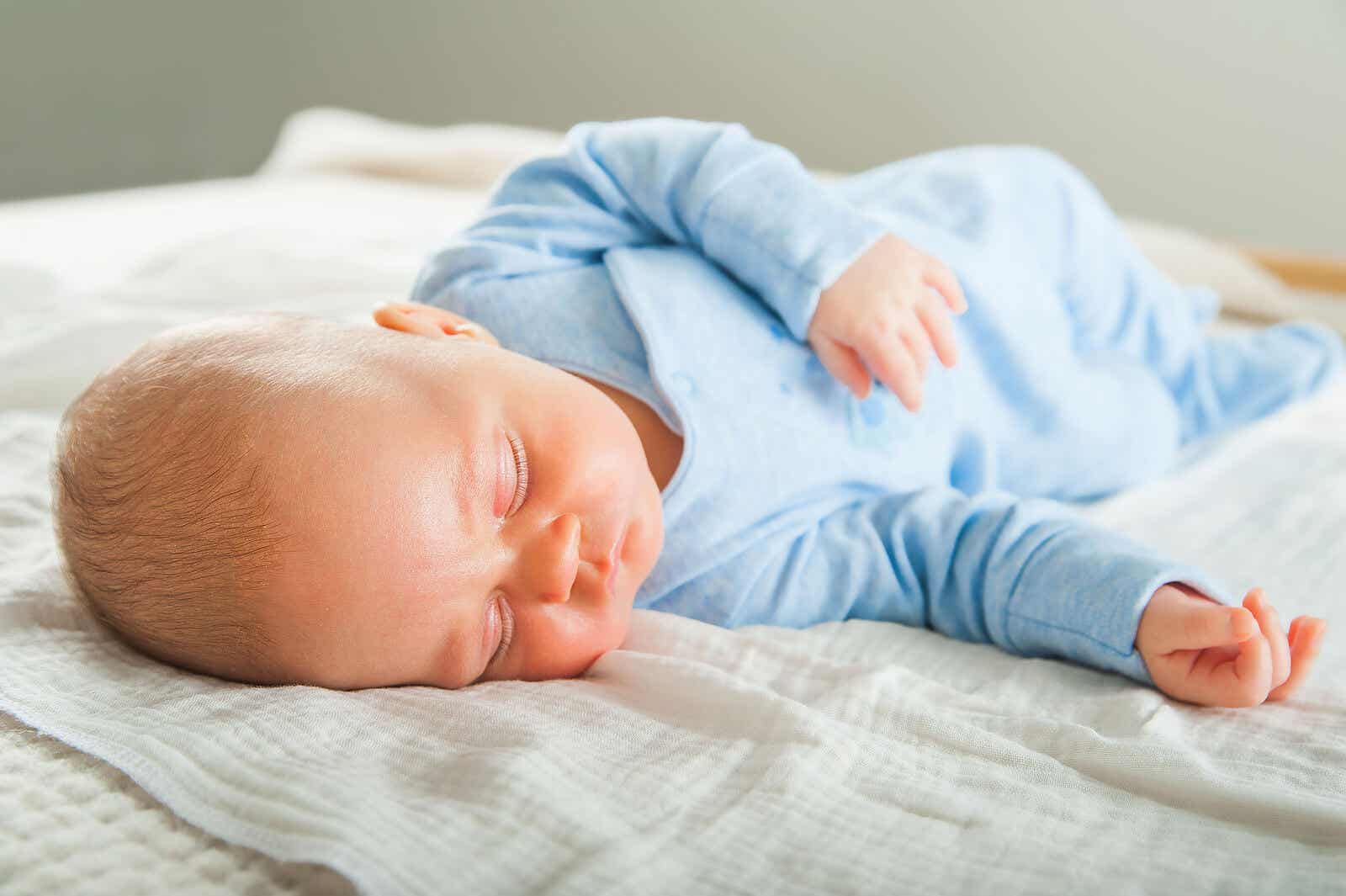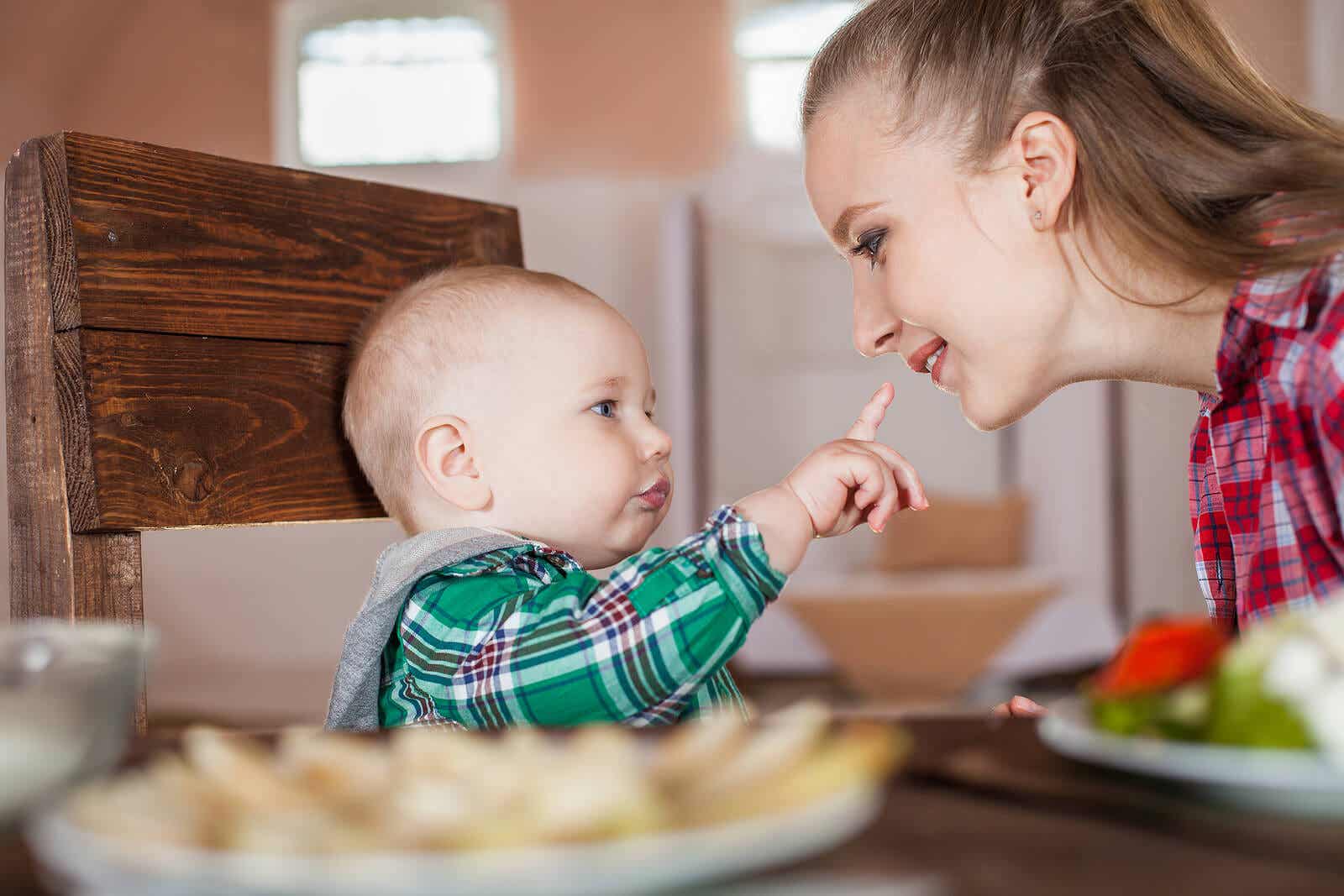Overall Child Development During the First Two Years


Written and verified by the psychopedagogue María José Roldán
The first years of a child’s life are very important for their overall development. In these first years, some of the things that shouldn’t be lacking are opportunities to play in order to learn and to develop creativity in order to be successful in the future. So, what aspects should you keep in mind during the integral development of a child during the first years?
First of all, you need to understand the stages of child development to understand the integral development of a child. Young children receive adequate stimulation to learn particular skills, which can be difficult in some cases. If a baby isn’t stimulated, it’ll be more difficult for them to succeed in the future.
In addition, children need to see in their parents a good example to learn about good behavior and habits that are important for life.
Appropriate behavior will give them opportunities to access new reinforcers, new contingencies, new environments, and new related behaviors. At the same time, it’ll complete with archaic or problematic behaviors.

Behavior in the development of the whole child
Individual behavior has far-reaching implications for each individual and for the field of developmental psychology because it provides a behavioral alternative to the concept of maturation and change due to the simple passing of time, such as developmental milestones.
A milestone is a behavioral change that has special characteristics compared to other behavioral changes. We’ll look at this in more detail below.
Comprehensive development from 0 to 1 month
The Reflex Schema Stage. Babies learn how the body can move and function. Vision is blurry and attention span remains short during infancy. They’re not particularly aware of objects to know that they’ve disappeared from view.
However, infants up to 7 minutes old prefer to look at the face. The three main milestones of this stage are sucking, visual tracking, and hand grasping.
From 1 to 4 months
Primary circular reactions. Infants notice objects and begin to follow their movements. They continue to look at the spot where an object was, but only for a few moments. They “discover” their eyes, arms, hands, and feet as they act on objects.
This stage involves responses to familiar sights and sounds (including the parent’s face) and anticipatory responses to familiar events, such as opening the mouth for a spoon. The infant’s actions become less reflexive and intentionality emerges.
From 4 to 8 months
Secondary circular reactions. Infants will reach for an object that is partially hidden, indicating that they know the whole object is still there. However, if an object is completely hidden, the infant will not try to retrieve it.
The infant learns to coordinate vision and understanding. Actions are intentional, but the infant tends to repeat similar actions on the same object. They have yet to imitate novel behaviors.
Comprehensive development from 8 to 12 months
Coordination of secondary circular reactions. This is considered the most important milestone for the child’s cognitive development. At this stage, the infant understands causality and is goal-directed. The earliest understanding of object permanence emerges, as he can now retrieve an object when they observe its concealment.
This stage involves classic trial-and-error. After successfully retrieving a hidden object in one location (A), the child can’t retrieve it in a second location (B).

From 12 to 18 months
Tertiary circular reaction. The child acquires knowledge of means and ends and is able to solve new problems. He can now retrieve an object when it’s hidden several times within their sight, but can’t locate it when it’s outside their field of perception.
Integrated development from 18 to 24 months
The invention of new media through mental combination. The child fully understands the permanence of objects. They no longer fall into A-not-B errors. In addition, a baby can understand the concept of items that are hiding in containers.
For example, if you hide a toy in a matchbox and then place it under a pillow but, without the child seeing, you remove the matchbox and hand it to the child. The child will then look under the pillow to discover that it’s not in the box.
The toddler’s able to develop a mental image, take it into account, and manipulate it to solve problems, including object permanence problems that aren’t based solely on perception. He can now reason about where the object might be when an invisible displacement occurs.
In short, as you can see, a child’s overall development in the first two years of life progresses very quickly. Therefore, they achieve developmental milestones that will help them interact with their environment and better understand their surroundings.
The first years of a child’s life are very important for their overall development. In these first years, some of the things that shouldn’t be lacking are opportunities to play in order to learn and to develop creativity in order to be successful in the future. So, what aspects should you keep in mind during the integral development of a child during the first years?
First of all, you need to understand the stages of child development to understand the integral development of a child. Young children receive adequate stimulation to learn particular skills, which can be difficult in some cases. If a baby isn’t stimulated, it’ll be more difficult for them to succeed in the future.
In addition, children need to see in their parents a good example to learn about good behavior and habits that are important for life.
Appropriate behavior will give them opportunities to access new reinforcers, new contingencies, new environments, and new related behaviors. At the same time, it’ll complete with archaic or problematic behaviors.

Behavior in the development of the whole child
Individual behavior has far-reaching implications for each individual and for the field of developmental psychology because it provides a behavioral alternative to the concept of maturation and change due to the simple passing of time, such as developmental milestones.
A milestone is a behavioral change that has special characteristics compared to other behavioral changes. We’ll look at this in more detail below.
Comprehensive development from 0 to 1 month
The Reflex Schema Stage. Babies learn how the body can move and function. Vision is blurry and attention span remains short during infancy. They’re not particularly aware of objects to know that they’ve disappeared from view.
However, infants up to 7 minutes old prefer to look at the face. The three main milestones of this stage are sucking, visual tracking, and hand grasping.
From 1 to 4 months
Primary circular reactions. Infants notice objects and begin to follow their movements. They continue to look at the spot where an object was, but only for a few moments. They “discover” their eyes, arms, hands, and feet as they act on objects.
This stage involves responses to familiar sights and sounds (including the parent’s face) and anticipatory responses to familiar events, such as opening the mouth for a spoon. The infant’s actions become less reflexive and intentionality emerges.
From 4 to 8 months
Secondary circular reactions. Infants will reach for an object that is partially hidden, indicating that they know the whole object is still there. However, if an object is completely hidden, the infant will not try to retrieve it.
The infant learns to coordinate vision and understanding. Actions are intentional, but the infant tends to repeat similar actions on the same object. They have yet to imitate novel behaviors.
Comprehensive development from 8 to 12 months
Coordination of secondary circular reactions. This is considered the most important milestone for the child’s cognitive development. At this stage, the infant understands causality and is goal-directed. The earliest understanding of object permanence emerges, as he can now retrieve an object when they observe its concealment.
This stage involves classic trial-and-error. After successfully retrieving a hidden object in one location (A), the child can’t retrieve it in a second location (B).

From 12 to 18 months
Tertiary circular reaction. The child acquires knowledge of means and ends and is able to solve new problems. He can now retrieve an object when it’s hidden several times within their sight, but can’t locate it when it’s outside their field of perception.
Integrated development from 18 to 24 months
The invention of new media through mental combination. The child fully understands the permanence of objects. They no longer fall into A-not-B errors. In addition, a baby can understand the concept of items that are hiding in containers.
For example, if you hide a toy in a matchbox and then place it under a pillow but, without the child seeing, you remove the matchbox and hand it to the child. The child will then look under the pillow to discover that it’s not in the box.
The toddler’s able to develop a mental image, take it into account, and manipulate it to solve problems, including object permanence problems that aren’t based solely on perception. He can now reason about where the object might be when an invisible displacement occurs.
In short, as you can see, a child’s overall development in the first two years of life progresses very quickly. Therefore, they achieve developmental milestones that will help them interact with their environment and better understand their surroundings.
All cited sources were thoroughly reviewed by our team to ensure their quality, reliability, currency, and validity. The bibliography of this article was considered reliable and of academic or scientific accuracy.
- Muñoz García, A. (2010) Psicología del desarrollo en la etapa de educación infantil. Editorial: Pirámide.
This text is provided for informational purposes only and does not replace consultation with a professional. If in doubt, consult your specialist.








